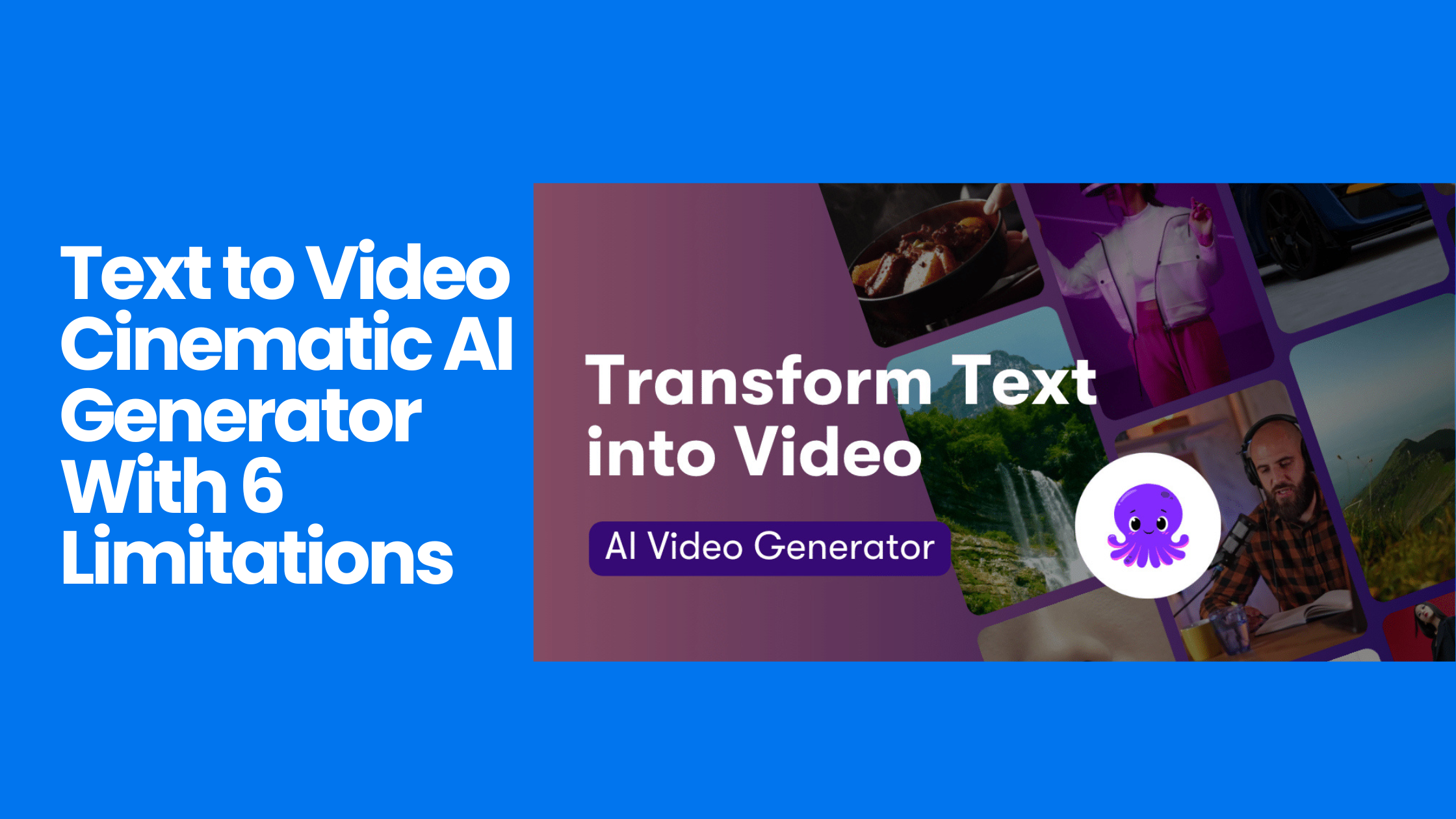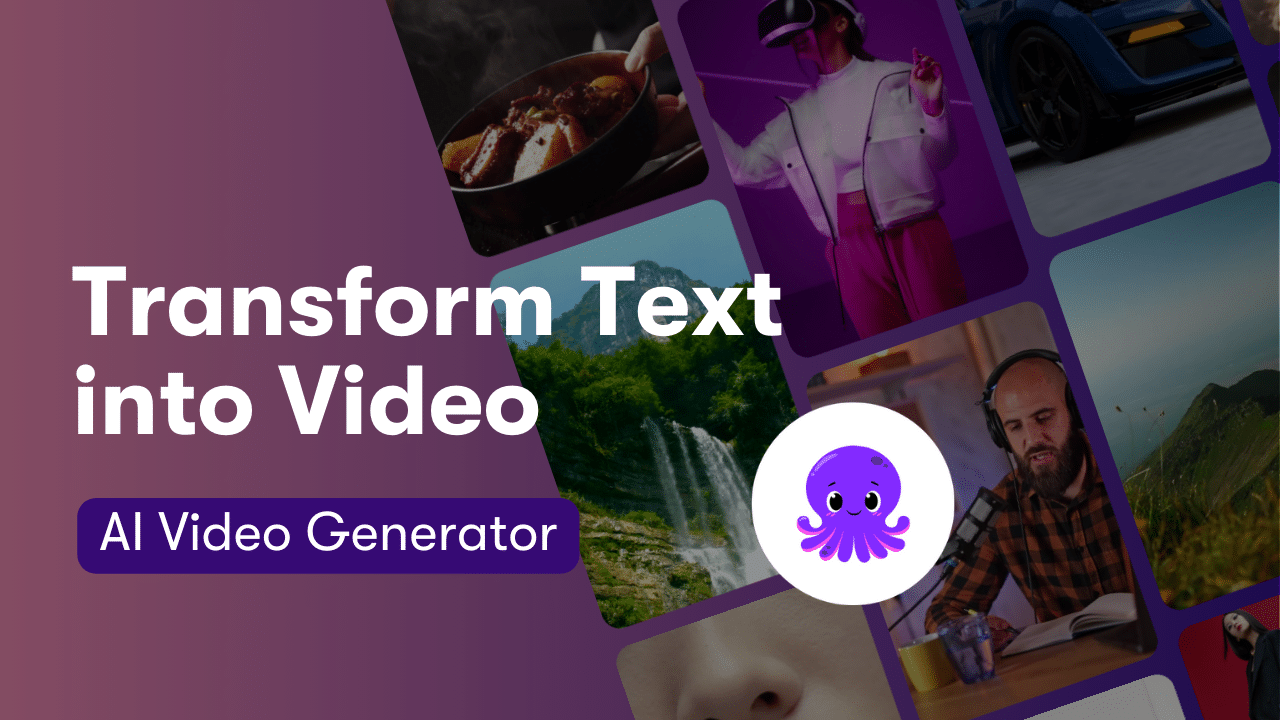
Text to Video Cinematic AI Generator With 6 Limitations
- Video Generators
- October 30, 2024
- No Comments
The emergence of the text to video cinematic AI generator has revolutionized the world of content creation, opening the door for filmmakers, marketers, educators, and artists to transform written narratives into stunning visual experiences. This technology utilizes advanced algorithms and neural networks to convert textual inputs into dynamic video sequences, allowing users to produce engaging content with minimal technical expertise. As the boundaries between creativity and technology continue to blur, AI-powered video generation is not just a tool but a transformative force in various industries. It holds the promise of democratizing filmmaking by making it accessible to anyone with a story to tell. In this article, we will delve into the mechanics of text to video generators, explore their potential applications, and discuss their impact on society and media.
Understanding the Mechanics of Text to Video Cinematic AI Generator

To fully appreciate how text to video generators work, it’s essential to explore the underlying technologies that make them possible.
Natural Language Processing and Its Role
Natural Language Processing (NLP) is a crucial component in converting text into video.
NLP involves analyzing and understanding human language through various techniques such as tokenization, syntactic parsing, and semantic analysis. The goal is to enable machines to comprehend and interpret text in a similar way to humans.
This understanding allows a cinematic AI generator to identify key themes, emotions, and narratives within the provided text. By extracting these elements, the generator can create a storyline that matches the intended message.
Moreover, NLP’s continuous evolution facilitates improved context recognition, enabling the generator to produce more nuanced and effective videos.
Computer Vision: A Vital Component
Computer vision plays an equally important role in the transformation process.
Once the narrative is interpreted, computer vision algorithms step in to determine what visuals best represent the spoken or written words.
This involves identifying objects, scenes, and actions that correspond to the identified themes and emotions from the text. The use of pre-trained models allows the AI to select appropriate images or clips to convey the narrative effectively.
Additionally, the integration of deep learning techniques enhances the system’s ability to generate high-quality graphics and animations, ensuring that the final product is visually appealing and engaging.
The Role of Generative Adversarial Networks
Generative adversarial networks (GANs) are at the forefront of creating compelling video content from text prompts.
In essence, GANs operate using two neural networks, a generator and a discriminator, that work against each other to produce high-quality outputs.
The generator creates video sequences based on the input text, while the discriminator evaluates whether the output resembles real footage.
This iterative process continues until the generator produces videos that are virtually indistinguishable from actual recordings. The adoption of GANs in text to video generation contributes to achieving realism and coherence, which is essential for cinematic storytelling.
Output Formats and Customization
An often-overlooked aspect of text to video generators is their capacity for customization.
Users have the flexibility to modify video outputs based on specific preferences, including duration, style, pacing, and even music accompaniment.
Many platforms allow for additional features such as voiceovers, captions, and special effects, enabling creators to tailor their videos to align with their brand or personal aesthetics.
Customization not only enhances user satisfaction but also ensures that the final product resonates more profoundly with its target audience.
Applications and Benefits of Text to Video Generators

The versatility of text to video cinematic AI generators allows for a multitude of applications across different fields.
Marketing and Advertising
In the realm of marketing, brands are increasingly turning to text to video generators to create promotional content swiftly.
By transforming product descriptions or customer testimonials into engaging videos, marketers enhance their outreach efforts significantly.
Video content tends to garner more attention than static images or text alone, leading to higher engagement rates and conversions.
Furthermore, the ability to create personalized video ads tailored to individual consumer preferences can foster deeper connections with audiences, ultimately driving business growth.
Education and E-Learning
In educational settings, text to video generators have the potential to reshape traditional learning methods.
Educators can convert lecture notes or lesson plans into instructional videos, catering to diverse learning styles and enhancing student engagement.
Visual aids play a critical role in information retention, and by presenting material in a dynamic format, instructors can make complex topics more accessible.
Additionally, e-learning platforms can leverage this technology to provide students with personalized learning experiences, where they can interact with content that adapts to their individual pace and comprehension levels.
Entertainment and Storytelling
For storytellers and filmmakers, text to video generators offer a new canvas to explore creative possibilities.
Aspiring filmmakers can turn scripts or story ideas into rough cuts of films without the need for extensive resources.
This democratization of filmmaking opens doors for independent creators, allowing them to experiment with narratives and visual styles that might have otherwise remained unrealized.
Moreover, the capacity to visualize stories enables writers and directors to refine their concepts before investing time and money into production, leading to better outcomes in the creative process.
Social Media Content Creation
Social media influencers and content creators are harnessing text to video generators to streamline their content production.
Given the fast-paced nature of social media, being able to generate captivating videos from text quickly is invaluable.
Creators can post regular updates, tutorials, or promotional content without spending days on editing.
Additionally, the quick turnaround fosters a more agile approach to content strategy, allowing creators to respond to trends and engage with their audiences more effectively.
Challenges and Limitations of Text to Video Generators

Despite the promising capabilities of text to video cinematic AI generators, challenges remain that must be addressed.
Quality and Accuracy Concerns
While advancements in AI have led to impressive results, the quality of generated videos can still vary significantly.
AI might misinterpret complex narratives or fail to grasp cultural nuances, resulting in videos that miss the mark in terms of emotional resonance or thematic coherence.
This inconsistency poses risks for professional content creators who rely on the technology to maintain their reputations.
Consequently, careful oversight and human intervention are often necessary to ensure high-quality outputs.
Ethical Implications
The rise of text to video generators raises ethical questions surrounding copyright and ownership.
When AI generates content based on existing works, distinguishing between original ideas and derivative content becomes challenging.
This complexity complicates intellectual property rights and could lead to potential legal disputes if not managed appropriately.
Moreover, the ease of creating videos can enable the spread of misinformation or harmful content, necessitating responsible usage guidelines and regulations to mitigate adverse effects.
User Accessibility and Learning Curve
Despite the simplification of video production, there remains a learning curve associated with using text to video generators.
Users may struggle to craft effective text prompts that yield desirable outcomes.
A lack of familiarity with the technology can hinder the creative process, particularly for those without a background in digital content creation.
To address this challenge, developers must focus on creating intuitive interfaces and providing comprehensive tutorials to empower users to maximize the potential of these tools.
The Future of Text to Video Generation
As technology continues to advance, the future of text to video cinematic AI generators appears promising.
Continued improvements in NLP and computer vision will enhance the quality and accuracy of generated videos, making them increasingly indistinguishable from human-generated content.
Moreover, as awareness around ethical implications grows, developers may introduce frameworks to safeguard against misuse and ensure responsible implementation.
Ultimately, the potential for innovative storytelling remains vast, heralding a new era of creativity where machine and human collaboration redefine the landscape of visual media.
Conclusion
In conclusion, the emergence of text to video cinematic AI generators signifies a profound shift in how we approach content creation. The interplay of advanced technologies like natural language processing, computer vision, and generative adversarial networks has paved the way for a democratized filmmaking process that invites creativity and innovation from all corners of society. While challenges such as quality control, ethical implications, and accessibility remain, the potential benefits and applications of this technology are vast and exciting. As we navigate this new frontier, it is essential to embrace both the opportunities and responsibilities that come with such powerful tools, ensuring a future where creativity thrives in tandem with technological advancement.
FAQs
What are text to video generators?
Text to video generators are AI-based tools that convert written text into video content. They utilize natural language processing and computer vision technologies to interpret narratives and create corresponding visuals.
How do text to video generators work?
Text to video generators analyze the provided text to identify key themes, emotions, and narratives. They then leverage algorithms and pre-trained models to select appropriate visuals, potentially integrating animation and sound to create a cohesive video.
Can anyone use text to video generators?
Yes, text to video generators are designed to be user-friendly and can be utilized by anyone, regardless of technical expertise. Many platforms offer intuitive interfaces that guide users through the video creation process.
Are there any limitations to text to video generators?
Yes, limitations include variability in the quality and accuracy of the generated content, potential ethical concerns regarding copyright, and the necessity for users to develop effective text prompts for optimal results.
What industries benefit most from text to video generators?
Industries such as marketing, education, entertainment, and social media benefit significantly from text to video generators. These tools streamline content creation, enhance engagement, and facilitate innovative storytelling.
Looking to learn more? Dive into our related article for in-depth insights into the Best Tools For Image Generation. Plus, discover more in our latest blog post on Video Generators Keep exploring with us!
Related Tools:
Image Generation Tools
Video Generators
Productivity Tools
Design Generation Tools
Music Generation Tools
For more AI tools, explore all categories by clicking here.
